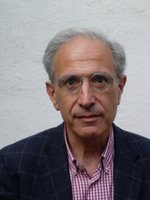Free software for schools
This is taken from the first draft of a paper written by Frederick Noronha, a journalist and internet guru who lives and works in Goa, India. Contact him at fred@bytesforall.org
Richard M. Stallman, the founding father of the Free/Libre and Open Source Software (FLOSS) Movement, argues that schools should exclusively use free software. He writes: "There are general reasons why all computer users should insist on free software. It gives users the freedom to control their own computers with proprietary software, the computer does what the software owner wants it to do, not what the software user wants it to do. Free software also gives users the freedom to cooperate with each other, to lead an upright life. These reasons apply to schools as they do to everyone."
He argues that there are "special reasons" for schools particularly to look at FLOSS, including:
1. Free software can save the schools money in a context where schools even
in the affluent world are short of money.
2. School should teach students ways of life that will benefit society as a whole and promote "free software just as they promote recycling".
3. Free software permits students to learn how software works, thus helping build good future coders.
4. Proprietary software rejects their thirst for knowledge by keeping knowledge secret and "learning forbidden".
5. The most fundamental mission of schools is to teach people to be good citizens and good neighbors to cooperate with others who need their help (6) teaching the students to use free software, and to participate in the free software community, is a handson
civics lesson.
Other arguments have also come up. For instance the view that FLOSS is "stable, secure, feature rich, and easy to learn. It is also free. Or that proprietary software "products are expensive, and require sacrifices in our school budgets to deploy."
Most of these applications are protected by the Gnu Public License (or similar licenses), a license that protects the users right to use the source, alter the program, and copy and/or redistribute the program at will. That implies that possession of one copy of the software allows one to copy it and install it on any number of computers, or even share it with students or staff, without any need for concern over additional licenses.
SPECIFIC TOOLS: There are a growing number of tools that are suitable for deployment in school-based education. Most of these come from the global pool of Free/Libre and Open Source Software (FLOSS).
Below are some links to projects suitable for use in school education. France has had a group called the Libre Software School day, working on this. In Germany, the listing of who's using FLOSS in schools has been maintained by Andreas Rittershofer. Italy has it maintained by the group The Libre Software School Day. OFSET, the France-headquartered group, has tools which could be used in a wide range of contexts.
SUITABLE SOFTWARE: A Spanish volunteer from Catelonia, working for the Goa Schools Computers Project (later under the aegis of the Knowledge Initiatives Trust), put together an interesting collection of software suitable for use in schools. It is available at http://wikiwikiweb.de/FlossInSchools
Among the programmes listed are:
• BKchem, the chemical drawing programme written in Python.
http://www.zirael.org/bkchem
• Chemtool, a GTK+based 2D chemical structure editor for X11. It draws organic molecules easily. http://ruby.chemie.unifreiburg.de/~martin/chemtool
• ECell System is used for modelling, simulation, and analysis of large scale complex systems such as biological cells. http://ecell.sf.net
• 'GenChemLab' helps students prepare for actual lab experience. Supported experiments include titration, calorimetry, freezing point depression, vapour pressure, electrochemistry and spectrophotometry. http://genchemlab.sourceforge.net
• Earth3D visualizes the earth in realtime in a 3D view. You can rotate and zoom the view until countries, cities and even single houses become visible (in areas where the necessary map resolution is available), and fly around. You can also embed external data like current earthquake positions or cloud data. http://www.earth3d.org
• Xrmap interactively displays portions of the Earth, using the huge CIA world vector map. http://frmas.free.fr/li_1.htm
• Calcoo is a scientific calculator designed to provide maximum usability. http://calcoo.sourceforge.net
• Dr. Genius is merged from two projects: Dr. Geo and the Genius calculator, and is a vector drawing software. http://drgenius.seul.org
Check all these out, and the many more reviewed in Frederick Noronha’s draft paper, which can be accessed at: www.divshare.com/download/2205748-36f


0 Comments:
Post a Comment
<< Home